- Clinical Technology
- Adult Immunization
- Hepatology
- Pediatric Immunization
- Screening
- Psychiatry
- Allergy
- Women's Health
- Cardiology
- Pediatrics
- Dermatology
- Endocrinology
- Pain Management
- Gastroenterology
- Infectious Disease
- Obesity Medicine
- Rheumatology
- Nephrology
- Neurology
- Pulmonology
Leukocytoclastic Vasculitis and Stasis Dermatitis With Id Reaction
A Photo Quiz to Hone Dermatologic Skills
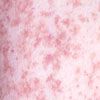
Figure 1

Figure 2
Case 1:
A slightly pruritic eruption developed on the lower legs of a 39-year-old woman after she had an upper respiratory tract infection, which was treated with an antibiotic. This is the third eruption that has occurred during the past 2 years. She has no fever, chills, or joint pain.
What do you suspect?
A.
Stasis dermatitis.
B.
Myxedema.
C.
Guttate psoriasis.
D.
Leukocytoclastic vasculitis.
E.
Adverse drug reaction.
(Answer on next page.)

Figure 1

Figure 2
Case 1: Leukocytoclastic vasculitis
This patient has leukocytoclastic vasculitis, D, a histopathological term commonly used to denote a small- vessel vasculitis. The lesions may be associated with pruritus, a burning sensation, or pain, or they may be asymptomatic. Vasculitis of the skin can occur in the absence of any systemic disease, as was the case in this patient.
There are many possible causes of leukocytoclastic vasculitis; however, in up to 50% of affected patients, the cause is never identified. The evaluation of adult patients with this disorder usually includes a complete blood cell count, erythrocyte sedimentation rate, urinalysis, and blood chemistry panel.
Various infections are associated with vasculitis. Upper respiratory tract infections, particularly with b-hemolytic streptococci, and viral hepatitis are implicated most often. Medications are another common cause of vasculitis. In this patient, it was impossible to ascertain whether the antibiotic or the upper respiratory tract infection was responsible for the vasculitis because the skin eruption postdated both the infection and therapy for the infection.
Myxedema, stasis dermatitis, and psoriasis are not petechial or purpuric. An adverse drug reaction would be difficult to differentiate if it was a vasculitic reaction. A biopsy can confirm the diagnosis.
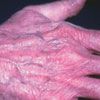
Figure 1
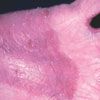
Figure 2
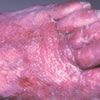
Figure 3
Case 2:
A 68-year-old woman presents with a worsening pruritic rash of 2 months' duration on her hands and feet. She has been treated for hypertension for the past few years, but she has not started any new medications recently. For years, she has had mild psoriasis on her elbows and knees, which she has treated with topical moisturizers. She denies any recent exposure to contactants.
What is the likely cause of this rash?
A.
Tinea pedis with id reaction.
B.
Psoriasis.
C.
Stasis dermatitis with id reaction.
D.
Contact dermatitis.
E.
Dyshidrosis.
F.
Medication reaction.
(Answer on next page.)

Figure 1

Figure 2

Figure 3
Case 2: Psoriasis, stasis dermatitis, id reaction
Pitting edema of both lower extremities contributed to the new onset of stasis dermatitis with an id reaction, C. In addition, this patient's underlying psoriasis, B, resulted in the Koebner phenomenon, in which an outbreak of psoriasis was superimposed on the stasis dermatitis and id reaction. Treatment of the stasis dermatitis with a diuretic and support hose and the application of a topical corticosteroid alleviated the rash after several weeks.
β-Blockers have been reported to cause worsening of psoriasis, although this patient was not taking a β-blocker.1,2 Contact dermatitis is typically not as well demarcated as psoriasis. Dyshidrosis is usually more vesicular. Tinea pedis can be ruled out with a potassium hydroxide examination.
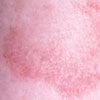
Figure 1
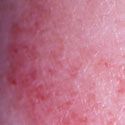
Figure 2
Case 3:
For several days, a 53-year-old woman has had an asymptomatic eruption on her leg. There is no history of trauma or exposure to contactants. She is otherwise healthy.
What are you looking at here?
A.
Leukocytoclastic vasculitis.
B.
Benign pigmented purpura (Schamberg disease).
C.
Insect bite reaction.
D.
Stasis dermatitis.
E.
Tinea corporis.
(Answer on next page.)

Figure 1

Figure 2
Case 3: Schamberg disease
Schamberg disease, B, is one of the pigmented purpuric dermatoses. These chronic diseases of mostly unknown etiology have a very distinctive clinical appearance; they are characterized by extravasation of erythrocytes in the skin with marked hemosiderin deposition.
A complete blood cell count is sometimes necessary to exclude thrombocytopenia, and coagulation screening helps rule out other possible causes of purpura, such as vasculitis. A skin biopsy helps confirm the diagnosis.
Stasis dermatitis and tinea corporis are generally more scaly and pruritic than this patient's eruption. Insect bite reactions are usually more inflamed and pruritic; moreover, petechiae are not a typical feature of such reactions.
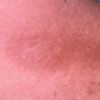
Case 4:
For several months, a 22-year-old woman has had an asymptomatic indurated patch on her shoulder. There is no history of trauma or exposure to contactants. She is otherwise healthy.
What is your clinical impression?
A.
Erythema annulare centrifugum.
B.
Granuloma annulare.
C.
Morphea.
D.
Persistent tick bite reaction.
E.
Factitial dermatitis.
(Answer on next page.)

Case 4: Morphea
A skin biopsy confirmed the clinical impression of morphea, C. This benign condition usually runs a protracted course of 3 to 5 years before spontaneously clearing.
Erythema annulare centrifugum often follows a tick bite and is characterized by an expanding annular ring. Granuloma annulare also presents typically as an asymptomatic annular ring; however, the border is indurated with central clearing. In some patients with granuloma annulare, the lesions have central hyperpigmentation. Persistent tick bite reactions are usually inflammatory papules that remain pruritic. Factitial lesions generally show evidence of manipulation (ie, rubbing, scratching), or if they result from self-injection, a more accessible site than that seen here is typically chosen. A biopsy can show evidence of foreign material.
References:
REFERENCES:
1.
Yilmaz MB, Turhan H, Akin Y, et al. Beta-blocker-induced psoriasis: a rare side effect-a case report.
Angiology.
2002;53:737-739.
2.
O'Brien M, Koo J. The mechanism of lithium and beta-blocking agents in inducing and exacerbating psoriasis.
J Drugs Dermatol.
2006;5:426-432.
